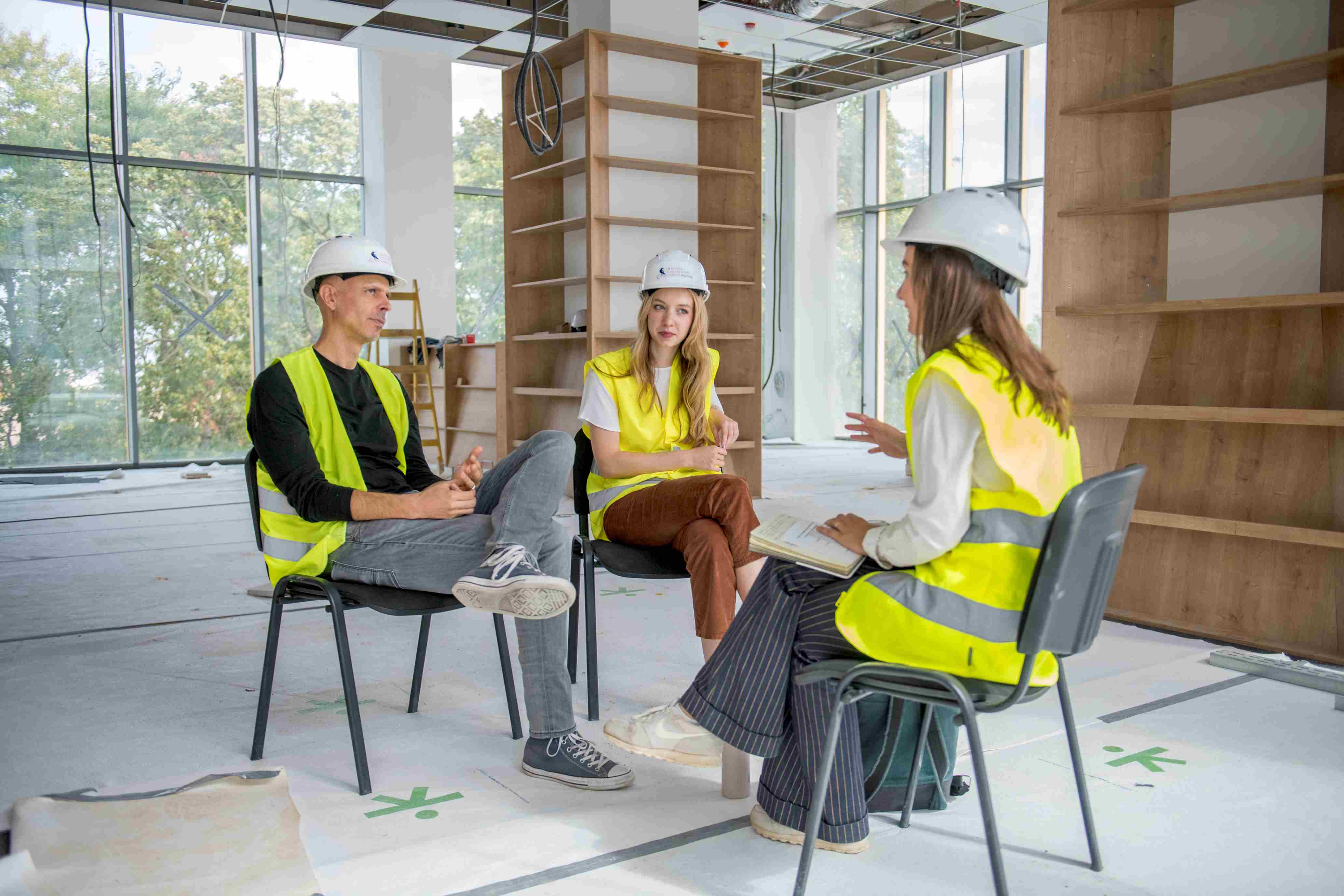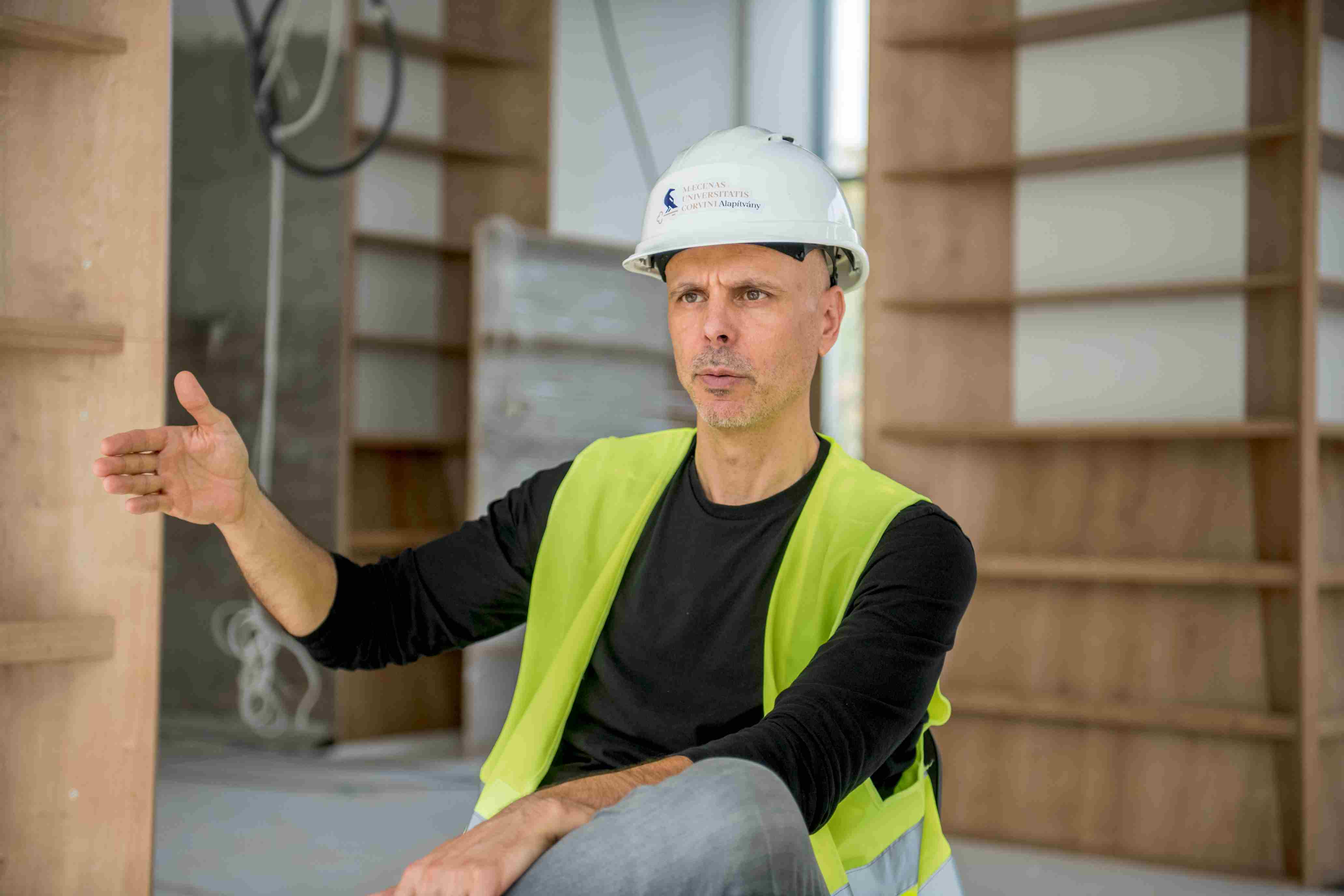The campus on Ménesi Street is all about community

We walk between workers and hanging cables, through planks in the new Corvinus campus on Ménesi StreetFirst you enter a large, open space. Through the huge glass surface, you can see the rooftops of Pest, the excavators working around the building and the solar panels on the roof of the sports hall. This will be the first community space where the staff members and students of the University will enter when they rush across from Fővám SquareRéka Papik and Zsolt Petri were there when the idea of a spacious, bright space, a symbol of inclusion and community.
“It’s incredible, but I can still seehow the campus we imagined together springs up from the A3 sheets and post-its,” says Réka Papik, former student, about our new campus on Ménesi Street.

The 30-40-page document, the final product of the community planning process, was the starting point for the architectural design. In a decision-making situation, this is what the staff members working on the campus development refer back to this day. One of them was Réka Papik, a former student of ours, for whom community planning has become such a defining experience that she has stayed involved in the process and is now working on the project as a staff member of the University. In addition to community and collaboration, the campus building has a progressive professional content. Zsolt Petri is a service planner and organisational developer who has been involved in several campus development projects, but he believes that the courage and openness with which the design team and the university supporting them approached the project, and the fact that the owner of the complex, the foundation maintaining the university, provided the opportunity and resources, is unprecedented in Hungarian higher education.
In November 2020, as a student representative, Réka joined the “Inner World” working group, where she worked on the design of the new campus together with other students, lecturers, university administrators, architects and operations specialists. Over the course of 9 months, they attended nearly 30 workshops to work out what kind of campus they wanted. On the very first occasion, Réka met Zsolt , who is also an enthusiastic and knowledgeable representative of design thinking. “I accompanied the campus planning process as an expert, I was a facilitator in the workshops,” says Zsolt about his role.

The new campus was created through a community planning process involving representatives from all groups concerned. Alongside students, lecturers and administrators representing the university community, academic and architectural experts worked together to find answers to the most important questions: what do you need, what kind of campus do you want, and what kind of future do you envision for yourselves? “The design methodology and participatory design attempt to find out what kind of needs and ideas the users and stakeholders have, and then try to put them into a concept that the architects and the university itself can elaborate further,” Zsolt explains the process, which is never about simply telling the participants what it should be, but about discussing, debating and trying to take into account as many points of view as possible.
“It was obviously a scary situation at the beginning because there were a lot of senior managers involved and I didn’t know them at the time. I was worried about how much of a say I would have as a student, but the team and the methodology were so good that a partnership could be formed between those involved.”
“We were very careful all along to build this campus for students first and foremost,” recalls Réka.
“As a student, Réka had the same power to shape the events as a leader,” adds Zsolt, explaining how the methodology used makes this possible. At the workshops, different representatives sit at each table, looking for common intersections. When a compromise is reached within the table, the whole room discusses it. “We can get much better quality ideas than, for example, just through a questionnaire survey, because it is representative and activity-based,” says Zsolt.

The starting point for planning is the values that the participants define together. These can often seem abstract, so it’s worth looking at an example. We talked to Zsolt and Réka in the reading room, where the shelves are already in place. “One of the core values we defined at the beginning of the process was that the campus should support the creation of personal, quality moments and collaboration between different partners. But sometimes you also need the focused, quiet work that can be done in this space,” explains Réka.
In case you’re wondering which study programmes will occupy the building from the spring semester, read our previous article.
The architects originally proposed narrow, long spaces, based on the grid structure of the buildings, primarily suitable for frontal teaching, but the community design process revealed that the university community was thinking in more modern teaching methods, and so adaptable spaces were created. “One of the tasks was to create spaces that are not for the now, but can respond in some way to the future,” says Zsolt. Réka also mentions another future-proof example that reflects the latest trends. The dormitory rooms, com e with service blocks that allow for converting double or triple rooms into single rooms in the future, if necessary.”I think that if the community wants to use this building in a different way later on, it can be given a facelift without basically having to dismantle the whole structure,” Zsolt adds.
The design of the dormitory was also influenced by the goal that the students themselves emphasised during the design process: community building.

“It’s really all about cooperation and encounters.”
“The aim is to create as many situations as possible where we can connect in education, research, sport and leisure,” Zsolt explained. The design team has taken this objective very seriously. For example, there will be no microwaves in the dormitory rooms, but a 150-square-metre living room with an open-plan kitchen in the middle of each floor. “The goal is to get everyone out of their rooms and share,” explains Réka.
written by Tünde Taxner